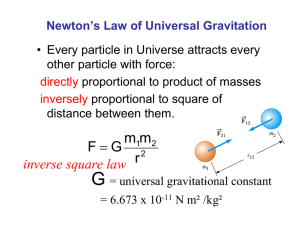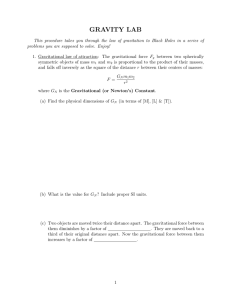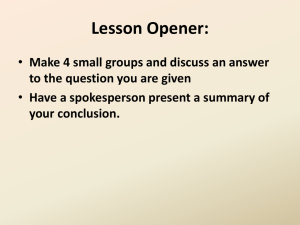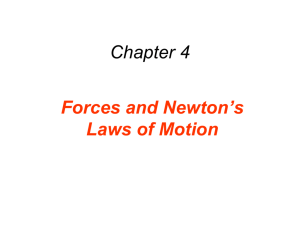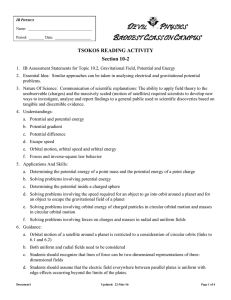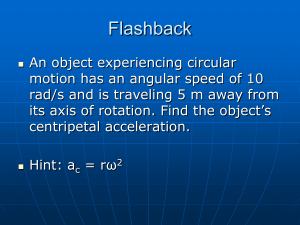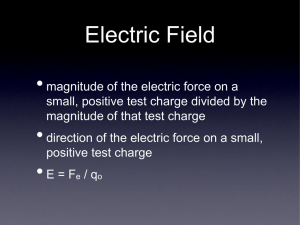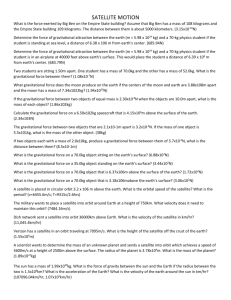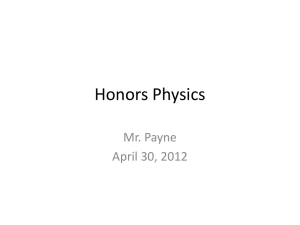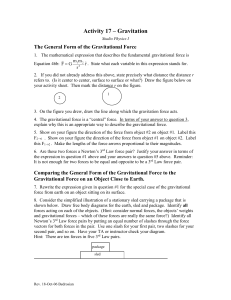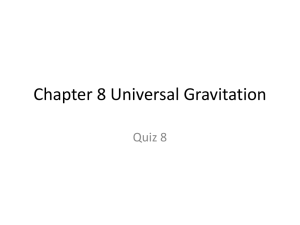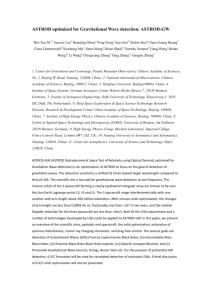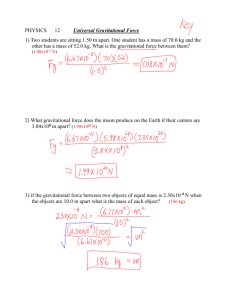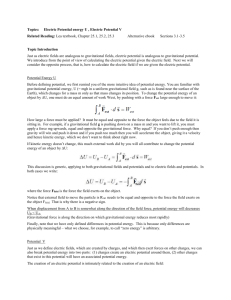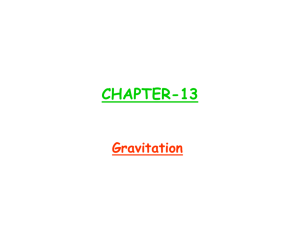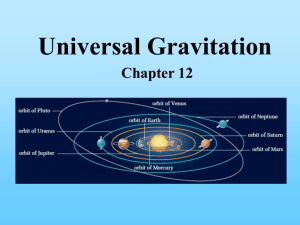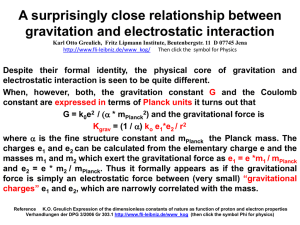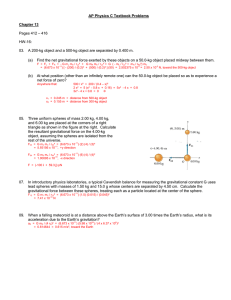Physics1
advertisement
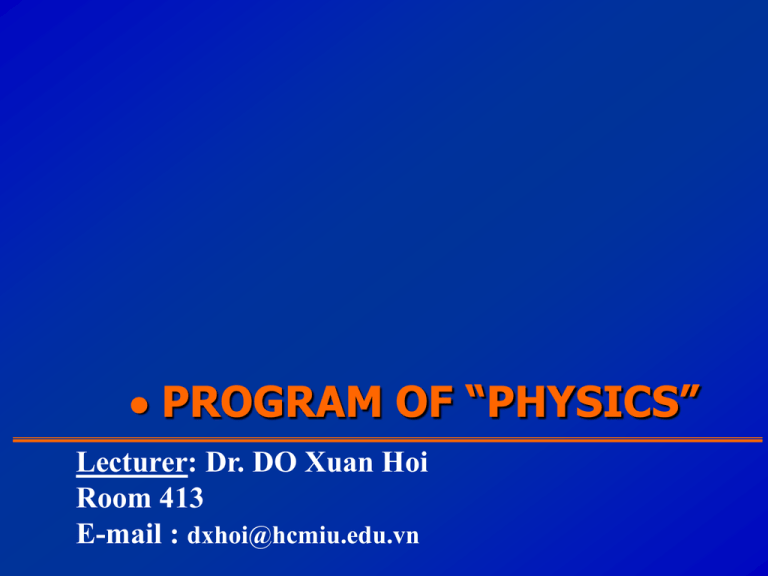
PROGRAM OF “PHYSICS” Lecturer: Dr. DO Xuan Hoi Room 413 E-mail : dxhoi@hcmiu.edu.vn PHYSICS I (General Mechanics) 02 credits (30 periods) Chapter 1 Bases of Kinematics Motion in One Dimension Motion in Two Dimensions Chapter 2 The Laws of Motion Chapter 3 Work and Mechanical Energy Chapter 4 Linear Momentum and Collisions Chapter 5 Rotation of a Rigid Object About a Fixed Axis Chapter 6 Static Equilibrium Chapter 7 Universal Gravitation References : Halliday D., Resnick R. and Walker, J. (2005), Fundamentals of Physics, Extended seventh edition. John Willey and Sons, Inc. Alonso M. and Finn E.J. (1992). Physics, AddisonWesley Publishing Company Hecht, E. (2000). Physics. Calculus, Second Edition. Brooks/Cole. Faughn/Serway (2006), Serway’s College Physics, Brooks/Cole. Roger Muncaster (1994), A-Level Physics, Stanley Thornes. http://ocw.mit.edu/OcwWeb/Physics/index.htm http://www.opensourcephysics.org/index.html http://hyperphysics.phyastr.gsu.edu/hbase/HFrame.html http://www.practicalphysics.org/go/Default.ht ml http://www.msm.cam.ac.uk/ http://www.iop.org/index.html . . . PHYSICS I Chapter 7 Universal Gravitation Newton’s Law of Universal Gravitation Kepler’s Laws Gravitational Potential Energy 1. Newton’s Law of Universal Gravitation The Law: “Every particle in the Universe attracts every other particle with a force that is directly proportional to the product of their masses and inversely proportional to the square of the distance between them.” Fg G G = 6.673 10 F 1 2 G m 1m 2 r 2 m 1m 2 r -11 2 2 N m /kg r 1 2 G 2 m 1m 2 r 3 r Free-Fall Acceleration The force acting on a freely falling object of mass m near the Earth’s surface. Newton’s second law: F ma mg Fg G MEm 2 RE (ME: Earth’s mass; RE: Earth’s radius) g G ME 2 RE 9 .8 1 m / s 2 Object of mass m located a distance h above the Earth’s surface or a distance r from the Earth’s center: r RE h g 'G ME (R E h ) 2 EXAMPLE 1 Two objects attract each other with a gravitational force of magnitude 1.0010-8 N when separated by 20.0 cm. If the total mass of the two objects is 5.00 kg, what is the mass of each? Fg G m 1m 2 r 2 6.673 10 m 1m 2 11 (0.20) 2 1.00 10 m 1 m 2 6.00 m 1 m 2 5.00 kg m 1 2.00 kg ; m 2 3.00 kg m 1 3.00 kg ; m 2 2.00 kg 8 2. Kepler’s laws 1. All planets move in elliptical orbits with the Sun at one focal point. 2. The radius vector drawn from the Sun to a planet sweeps out equal areas in equal time intervals. 3. The square of the orbital period of any planet is proportional to the cube of the semimajor axis of the elliptical orbit. T : period of revolution, a : semimajor axis T 2 K Sa 3 19 2 K S 2.97 10 a s /m 3 CIRCULAR ORBIT : A planet of mass Mp moving around the Sun of mass MS in a circular orbit EXAMPLE 2 Calculate the mass of the Sun using the fact that the period of the Earth’s orbit around the Sun is 3.156107 s and its distance from the Sun is 1.4961011 m. 3. Gravitational Potential Energy F dU dr m 1m 2 dU Fdr G 2 r Uf Uf Ui rf dU Ui Uf Ui dr rf m 1m 2 G r ri dr G m 1m 2 2 ri dr r 1 1 G m 1 m 2 ri rf We put : U f G In general: m 1m 2 U G rf ; U i G m 1m 2 r m 1m 2 ri 2 To compare: Gravitational force near the Earth’s surface: F mg Gravitational potential near the Earth’s surface: Elastic force : U m gx F kx Elastic potential: U 1 2 kx Gravitational force : Fg G Gravitational potential : Coulomb force : FC K Gravitational potential : General formula: 2 m 1m 2 2 U G r m 1m 2 q 1q 2 r r 2 U C K F dU dr q 1q 2 r F gradU U EXAMPLE 3 As Mars orbits the sun in its elliptical orbit, its distance of closest approach to the center of the sun (at perihelion) is 2.0671011 m, and its maximum distance from the center of the sun (at aphelion) is 2.4921011 m. If the orbital speed of Mars at aphelion is 2.198104 m/s, what is its orbital speed at perihelion? (You can ignore the influence of the other planets.) Apply conservation of energy: EXAMPLE 4 Escape Speed Escape speed: The minimum speed the object must have at the Earth’s surface in order to escape from the influence of the Earth’s gravitational field. EXAMPLE 4 Escape Speed Escape speed: The minimum speed the object must have at the Earth’s surface in order to escape from the influence of the Earth’s gravitational field.
